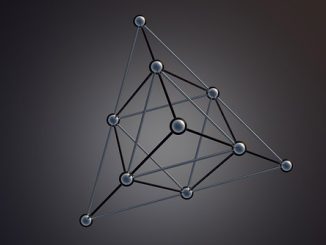
During the Stone Age, the most prevalent diseases and medical conditions were osteoarthritis, micro-fractures of the spine, spondylolysis (back stress fracture), and torque of the lower back.
Yes, you can easily guess what had largely caused these conditions among prehistoric people. Carrying and transporting of massive stones and other heavy objects.
By the way, rickets, infections, and hypertension are not modern diseases. Our ancestors suffered from them as well, due to vitamin D deficiency, severe cuts and wounds, and stressful lifestyle.
Your next question may be, ‘didn’t they have any cures or medicines at that time?’
Actually, there were already Stone-age medicines — although not as refined and “expensive” as many of today’s drugs.
According to Medical News Today, based on anthropological evidence that were excavated in Iraq, some of these herbal remedies were as follows:
- Yarrow. Our prehistoric ancestors probably used this plant to heal cuts, wounds, and abrasions. And it seemed that this herbal remedy was really effective since the Greeks, Chinese, and Native Americans had used it, too, to stop bleeding wounds, treat infections, lower fever, and even cure gastrointestinal disorders. Today, it’s been proven that yarrow has antiseptic, anti-inflammatory, and astringent properties. It is also good as an expectorant and in promoting good digestion.
- Mallow. This herb must have been used by prehistoric humans for cleansing the colon, which was very important considering how primitive food preparation was at that time. The colon helps the body to excrete toxins and waste products, and re-absorb remaining nutrients and electrolytes from digested food. Today, this herb is also used for treating asthma, bronchitis, coughing, kidney stones and inflammation, gallstones, constipation, headache, toothache, and even insomnia.
- Rosemary. This plant has been used as an herbal medicine in many parts of the world since prehistoric times. Also called, “Dew of the Sea,” this herb contains antibacterial and antioxidant rosmarinic acid, including essential oils like borneol, bornyl acetate, cineol, camphene and α-pinene which possess antiseptic, anti-inflammatory, and anti-fungal properties. Aside from these medicinal benefits, rosemary is also one of the richest sources of anti-oxidants and other essential vitamins and minerals.
- Birch Polypore. Traces of this fungus were found by archeologists found in a mummy. The plant might have been used as a laxative by ancient people. Modern researches state that this mushroom has anti-inflammatory, anti-bacterial, and anti-viral properties. It has also been proven to fight tumors.
However, in ancient times, many diseases had been also attributed to evil spirits. That was why shamans, or witch doctors, used to practice trepanning to cure mental disorders, epileptic seizures, and migraines. A shaman would drill a hole into the skull of a patient to supposedly let loose the bad spirit and cure the mental illness. This method was also adopted to treat fractured skull, according to anthropological studies of ancient cave paintings.
From shaman to modern medicine, it really is a very big leap.
Now, at least, we’ve got anesthesia before a medical procedure or surgery. Studies on diseases have also opened our eyes to the fact that our ailments have nothing to do with bad spirits which must be exorcised or set free by drilling a hole into our skull.
What a huge relief that is!
Nonetheless, over countless millennia, herbs have remained of vital importance in maintaining health and fighting diseases. And, even though, we no longer rely on herbal medicines as much as human societies used to, the medical world uses information from plants in manufacturing drugs.
Pharmacologists take certain chemicals from plants, including some animal species, and study them to be able to come up with a medicine that targets a specific disease. This way, after evaluating the effectiveness of these chemicals, they could manufacture these chemicals artificially into drugs.
Pharmacological experimentation may involve the following:
- In order to eliminate unwanted side-effects or improve a medicine’s effectiveness, modify a substance’s chemical structure.
- Study what happens to a medicine after administration.
- Conduct safety studies by checking medicines for undesirable side-effects and determining their causes.
- Conduct of studies of other substances or chemicals which affect living systems like toxins, pesticides, and pollutants.
Hence, the importance of molecular dynamics (MD) simulations in drug design, wherein computers are used to investigate large macromolecular systems.
However, a big challenge continues to face pharmacologists since classic computers can only simulate molecular models with a limited number of atoms. It’s because interactions among molecules and particles are very complex, and simulating these interactions demands excessive computing power. Another thing that makes molecular simulation difficult is that sub-atomic particles like electrons behave according to the “spooky” laws of quantum mechanics.
Moreover, even though, quantum computing is now already available, it’s limited to a very few quantum bits or qubits that could be linked together. The most recent quantum experiment was able to use only 3. The qubits’ quantum states could easily be disrupted by fluctuation in temperature or an electric field or magnetic field that’s gone awry.
But, IBM quantum computing researchers have now discovered a way to overcome this obstacle. Using specialized metals called superconductors to make up 6 qubits, the team was able to simulate the biggest molecule. The superconductors proved effective in handling varying levels of electric current simultaneously, which enabled the researchers to analyze the molecules of lithium hydride, hydrogen, and beryllium hydride (BeH2).
With a special algorithm, the researchers succeeded in repeatedly nudging each of the simulated molecules into lower-energy states until they had reached the lowest point. Then, applying the same algorithm on IBM’s quantum computer, they were able to calculate the ground state energy of the 3 molecules — which was a world’s first in quantum simulation as published in Nature.
“I think it’s very, very promising. They’re pushing the boundaries of what computation today means,” remarks Marco De Vivo, a theoretical chemist at the Italian Institute of Technology in Genoa.
Indeed, it’s a very significant beginning for quantum molecular dynamics simulations and the world of science and medicine. Quantum computing will enable mankind to come up with more effective drugs at a faster pace and make quicker medical discoveries. Even though, we’ve been successful in eradicating many contagious diseases with vaccines and other medical endeavors, the world is still plagued with numerous ailments and genetic disorders. Quantum computing can advance medical technology at a rate that may even exceed our wildest expectations! We may even be able to completely unravel the mystery of aging and find the real key to longer, healthier lives!
Disclaimer: This page contains affiliate links. If you choose to make a purchase after clicking a link, we may receive a commission at no additional cost to you. Thank you for your support!




Leave a Reply